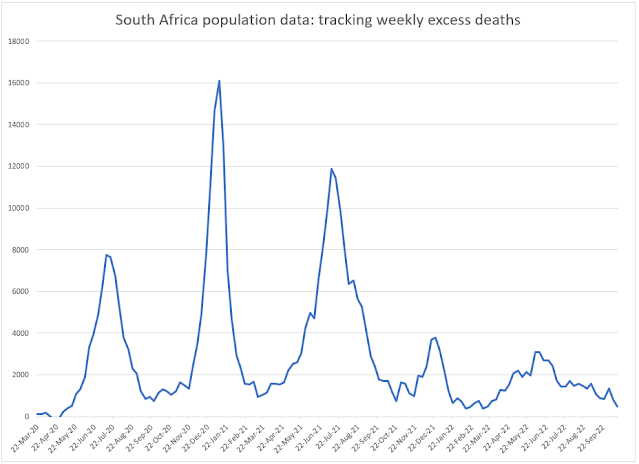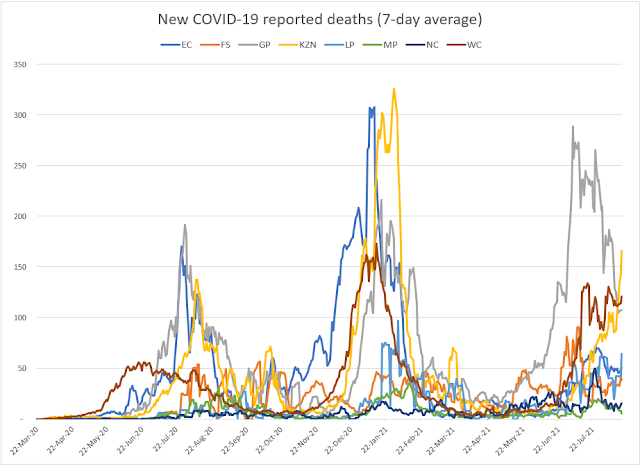Model calibration
In the COVID-19 muti-state model, a number of parameters are used to determine the number of lives who move from one state to another. The model itself was derived from a mathematical model
used to analyse the reported infections in China over the period from 10
January 2020 to 8 February 2020.
The SARS-CoV-2 virus that emerged in the Chinese city of Wuhan at the end of 2019 quickly spread to all Chinese provinces. Prior to the implementation of lockdown and other restrictions on 24 January 2020, it is estimated that 5 million people left Wuhan leaving 6 million residents in the city. The modelling was fit to data from Wuhan and 374 other Chinese cities for periods before and after the lockdown.
I used the best-fit parameters from the Chinese study for the model that I built over the weekend to better understand the shape of the pandemic in other areas, most notably South Africa. This model was subsequently peer reviewed by my colleagues at NMG Consulting and is now referred to as the NMG model. A flow diagram of the model is repeated below for ease of reference:
The first set of parameters determine the progression of the disease from 'exposed' to the three infectious states, namely symptomatic unreported (SU), symptomatic reported (SR) and asymptomatic unreported (AU):
From the Chinese study, a basic reproduction number of 2.38 was found to fit the experience from 10 January to 23 January 2020. This reduced to a basic reproduction number of 0.96 that fit the experience from 24 January to 8 February 2020, the period after lockdown.
The NMG model is fitted to the confirmed cases of COVID-19 in a population by varying the transmission rate parameter using a maximum value of 1.12 that is representative of a basic reproduction number of 3.20. The NMG model also needs starting values for the lives allocated to the 'exposed' and 'symptomatic unreported' state when calibrated for a population.
Along with reporting confirmed cases of COVID-19, countries are also reporting on the reported deaths from the disease. Fitting the NMG model to the reported deaths is done by varying the case fatality rate for the population. By following an iterative process, you can get a fit for both the confirmed cases and reported deaths.
5 April 2020
The SARS-CoV-2 virus that emerged in the Chinese city of Wuhan at the end of 2019 quickly spread to all Chinese provinces. Prior to the implementation of lockdown and other restrictions on 24 January 2020, it is estimated that 5 million people left Wuhan leaving 6 million residents in the city. The modelling was fit to data from Wuhan and 374 other Chinese cities for periods before and after the lockdown.
I used the best-fit parameters from the Chinese study for the model that I built over the weekend to better understand the shape of the pandemic in other areas, most notably South Africa. This model was subsequently peer reviewed by my colleagues at NMG Consulting and is now referred to as the NMG model. A flow diagram of the model is repeated below for ease of reference:
The first set of parameters determine the progression of the disease from 'exposed' to the three infectious states, namely symptomatic unreported (SU), symptomatic reported (SR) and asymptomatic unreported (AU):
- An incubation period of 3.68 days that determines the length of time that a life remains in the 'exposed' state before moving to one of the three infectious states;
- An infectious period of 3.48 days that determines how long a life remains in one of the three infectious states before moving to the 'recovered/died' state; and
- A fraction of 0.69 that determines the proportion of lives in the infectious states that are symptomatic
Lives move from the 'susceptible' to the 'exposed' states when they come into contact with a life in one of the three infectious states. The daily rate of infection by lives in the infectious states is determined by three factors:
- A transmission rate parameter that determines the number of lives that one infectious life will infect each day;
- A relative reduction parameter of 0.55 to be applied to the daily transmission rate parameter for infectious lives that are asymptomatic; and
- A 'herd immunity' reduction factor calculated as the ratio of the lives in the 'susceptible' state to the lives in the overall population. This factor is very close to 1.0 at the start of the pandemic but decreases as the numbers in the recovered state increase
From the Chinese study, a basic reproduction number of 2.38 was found to fit the experience from 10 January to 23 January 2020. This reduced to a basic reproduction number of 0.96 that fit the experience from 24 January to 8 February 2020, the period after lockdown.
The NMG model is fitted to the confirmed cases of COVID-19 in a population by varying the transmission rate parameter using a maximum value of 1.12 that is representative of a basic reproduction number of 3.20. The NMG model also needs starting values for the lives allocated to the 'exposed' and 'symptomatic unreported' state when calibrated for a population.
Along with reporting confirmed cases of COVID-19, countries are also reporting on the reported deaths from the disease. Fitting the NMG model to the reported deaths is done by varying the case fatality rate for the population. By following an iterative process, you can get a fit for both the confirmed cases and reported deaths.
5 April 2020




Comments
Post a Comment